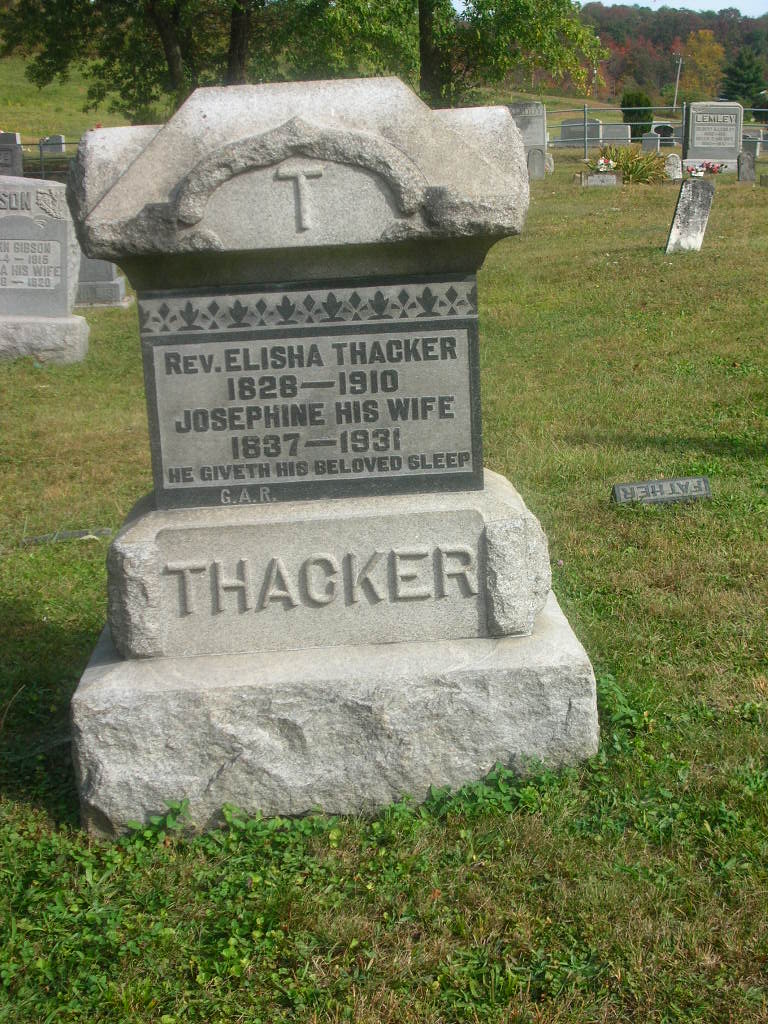GETAWAY, OHIO HISTORY
No. 3
Ironton Sunday Tribune, December 4, 1938
By: R. C. HALL, Ph. D.
Editor’s Note: This is the third in a series of articles dealing with the pioneer life of Getaway, this county. It is prepared by R. C. Hall, Ph.D., of Proctorville for The Tribune.
Getaway Ohio History Part Three – In 1898, a school that deserved special mention was established here. That was when the modern idea of professional training for teachers was beginning to gain a foothold in southern Ohio, and many progressive teachers felt that normal schools would solve the problem of securing properly trained teachers for young folks.
Accordingly, a Normal school was taught at Getaway by Oscar NEFF and W. A. RUSSELL, which proved to be so successful that it was continued the following year by W. A. RUSSELL and Roscoe WISEMAN, the enrollment reaching the high water mark, so to speak, of over 100 students.
Because of some large apple trees in the schoolyard, it became known as “Orchard Academy.” After several years, however, due to changes in the requirements of teachers, the establishment of normal courses at colleges, the better means of communication, etc., the local normal disappeared, and with them went “Orchard Academy.” Some of these same conditions prevented the establishment of modern high schools in such small villages as Getaway, so the people there must be content with merely a grade school.

Ernie Wright took Headstone Photo on findagrave.
Near the school lot, the Baptists established a cemetery in which the first interment took place in 1859, the deceased being Melcina TALLEY THACKER, the wife of the Rev. Elisha THACKER, who, with his family, had recently moved there from Wayne, W. Va. He became one of the leading citizens of Getaway.
He married his second wife, Josephone NOWLIN of Gallia. The remains of both now rest in the cemetery we have mentioned, which is now completely filled. It is Rev. THACKER’S daughter, Mrs. W. H. WADLECK, who so kindly supplied many facts and verified others in this sketch. And it is Mr. WALDECK who operates the general store at Getaway to which we have referred. Their daughters, Josephine and Elizabeth, follow as teachers in their mother’s footsteps.
In the Baptist cemetery also lies the bodies of Samuel LANGDON and his wife, their graves being covered with cut stone carved by Peter GERLACH, a pioneer stone cutter who immigrated to the neighborhood from Pennsylvania. Mr. LANGDON built the first log mill in the vicinity and passed away in 1861, followed by his wife in 1864.
The United Brethren also established a cemetery at Getaway, but, like their church building, it later became the Methodist cemetery. The remains of the community’s pioneers, soldiers of the Civil War, and other leading citizens of the village and surrounding country lie in these cemeteries.
We began this sketch as a history of Getaway, and during this narrative, so far, we have used that name several times, although, as we have stated, the village in question was first called Unionville and then Russell’s Place. In recent years, however, it has been generally known as Getaway. The story of its receiving its unique name is interesting. It seems that a stranger riding into the village one day in 1870 stopped to chat with the Rev. Elisha THACKER, who was building a fence along the road.
The stranger probably was not very favorably impressed with the place and asked, in derision, “What is the name of this CITY?” Whereupon, the Rev. THACKER exclaimed in somewhat the same vein, “Get Away!” The stranger took the reply naturally but defended himself by saying that he thought such a title appropriate for the place’s name. So after this story was told to others a few times, the name began to apply to the village. And so Getaway it became and has remained ever since.
In spite of the fact that Getaway has remained a small village and was, until the building of modern highways, almost isolated from the rest of the world, especially in winter, it has played an important part in the religious, educational, and political life of the township and county in which it is located.
Yes, it may truly be said that it played an important part in the state and nation’s history. For it has given liberally of its substance during at least three great crises in the country’s history, and it is, of course, because such small communities were willing to do even more than their share that the nation has always weathered such storms so nobly.
In 1860, that Getaway was first called upon for military sacrifice. (We shall refer to the village by that name throughout this narrative.) In 1861, Captain MACKINALLA came from Ironton to muster troops for the cause of the Union. Merchants deserted their stores. Farmers left their fields. Workmen turned from their shops, and ordinary business was suspended as men and women turned to the grim business of preparing for war.
John FUNSTON of Getaway became the drill master of the local company of soldiers being rapidly formed. Among the dozen men from the little village who volunteered were Joshua KITE, Michael KEENEY, A. P. RUSSELL, Goldin MARKIN, Kimball KEENEY, George THACKER, Harvey THACKER, and John BRAMMER.
This is Getaway Ohio History, Part Three – Read Part Four Here.

Thank you for your comment!
Samuel Langdon was my 3xgreat grandfather . His son Isaac organized Perkins Ridge Missionary Baptist Church on Greasy Ridge, Willow Wood OH